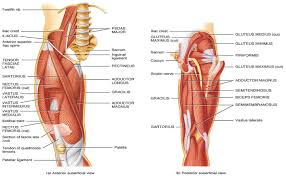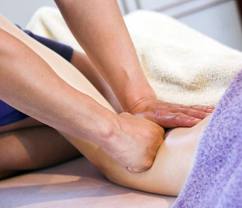Is driving a stick shift causing you to have knee pain?
I am new to the world of manual driving, a late bloomer you might say. After my partner’s truck was declared totaled we needed something affordable, able to hold a lot of people and easy on the wallet when it comes to gas. That’s how we ended up with an old grocery getting manual transmission Toyota Camry, which meant I had no choice but to jump on the stick shift bandwagon. I am ashamed to admit that this was my third attempt at learning to drive a stick, I had never quite gotten the hang of it. Third time truly is a charm and I am now finally mastering shifting gears without killing the car.
I have had some unexpected side effects pop up since I began driving a manual transmission vehicle: Knee pain….and since I have become aware of it I remember to check in with my massage clients about the type of car they are driving when they complain of knee pain in their sessions. I have noticed a common thread over the past few months, that many of us in the stick shift club are suffering with the same left knee aches and pains.
Here are a couple of the reasons why:
-
Weakened over-stretched glut muscles and tight quads: Sitting for long periods in general causes the back of your body to soften while the muscles in the front of your body become tighter and shorter creating a muscle imbalance which can lead to the structure of your body to be pulled out of alignment. This can lead to all sorts of other issues including low back, hip and knee pain.
-
Muscular imbalance in the legs: When you drive a manual transmission your left leg and right arm end up doing a lot of work while the left arm and right leg tend to be more stationary with small repetitive movements. The left leg is often in an active position with the foot hyper flexed or extended to operate the clutch which creates tension all the way up through the hip. This can cause major imbalances in the muscles that attach to the knee such as a tight tibialis anterior as well as the outer edge of the gastrocnemius. We have a lot of muscles attaching at the knee and if they get tight it can pull everything out of alignment causing you to feel pain. For me it presents itself on both the inner and outer edges, the back of my left knee as well as the outer edge of my left foot.
What can you do?
-
Good posture: Having good posture is always a great start to fixing pain in your body. Here is a cute and informative video on what good posture actually looks like: http://lifehacker.com/fix-your-posture-with-this-animated-guide-to-sitting-ri-1153760827
-
Pay attention: Are you allowing your left knee to splay out to the side or holding it really tightly in toward your right leg? Try to relax and find a balance where your knee is straight and relaxed.
-
Are you using muscles unnecessarily? I tend to hold my foot flexed rather than relaxing it to keep it off the clutch when I am driving around town. This causes undue stress on the muscles in my leg and increases the pain in my knee.
-
Take care of yourself! Rest, exercise, drink plenty of water, stretch! and get bodywork:)
The moral of the story is, if you pay attention to your driving patterns you will start to find the movements that are causing your pain and then it will be easier to correct them. Knee pain can have all sorts of underlying causes and driving a manual transmission may just be a small part of the problem. If you find that making small changes in your driving posture helps, awesome and if not it may be time to consult a health care professional to make sure there aren’t more serious issues.
Have you noticed any other issues from driving a manual transmission? I would love to hear about your experience! Please feel free to share in the comments or email us at wonthebody@gmail.com. Thanks so much for reading and have a great week!
Visit our website to learn more about bodywork: www.portlandmassagestudio.com



